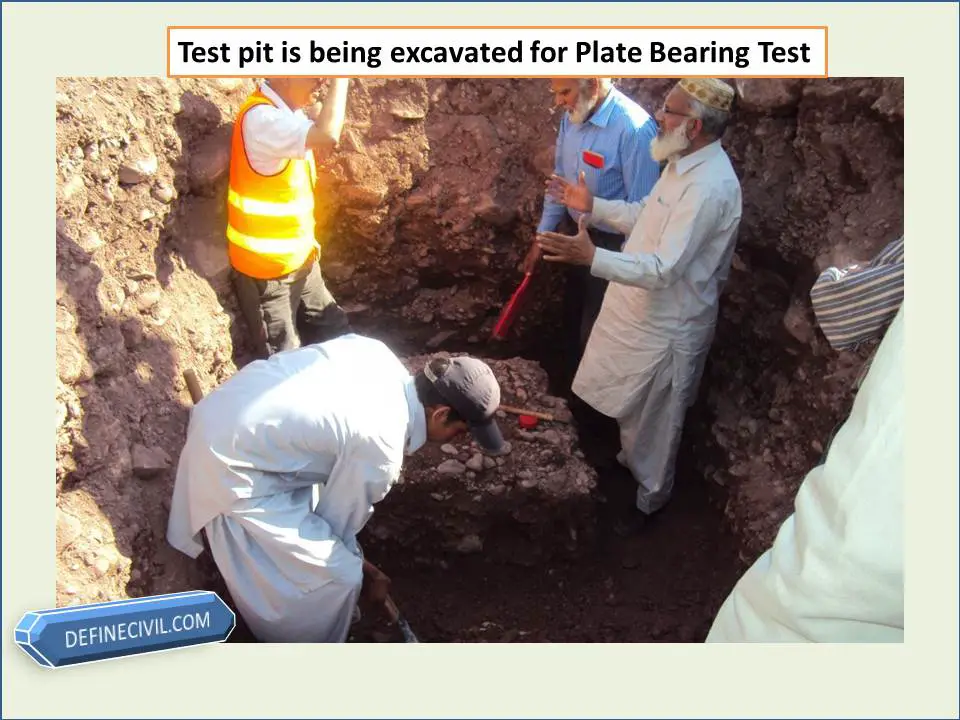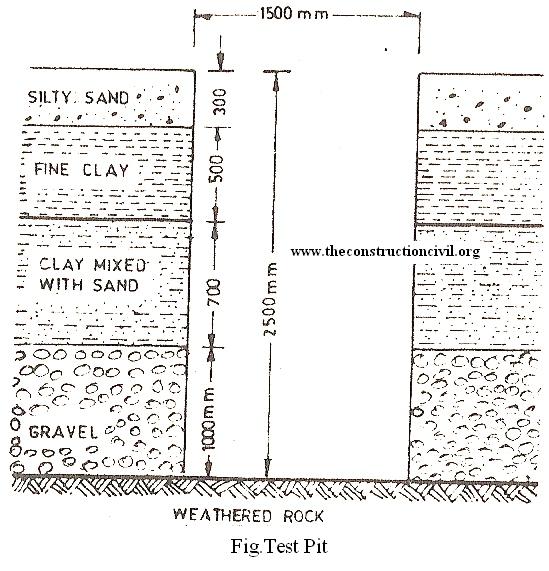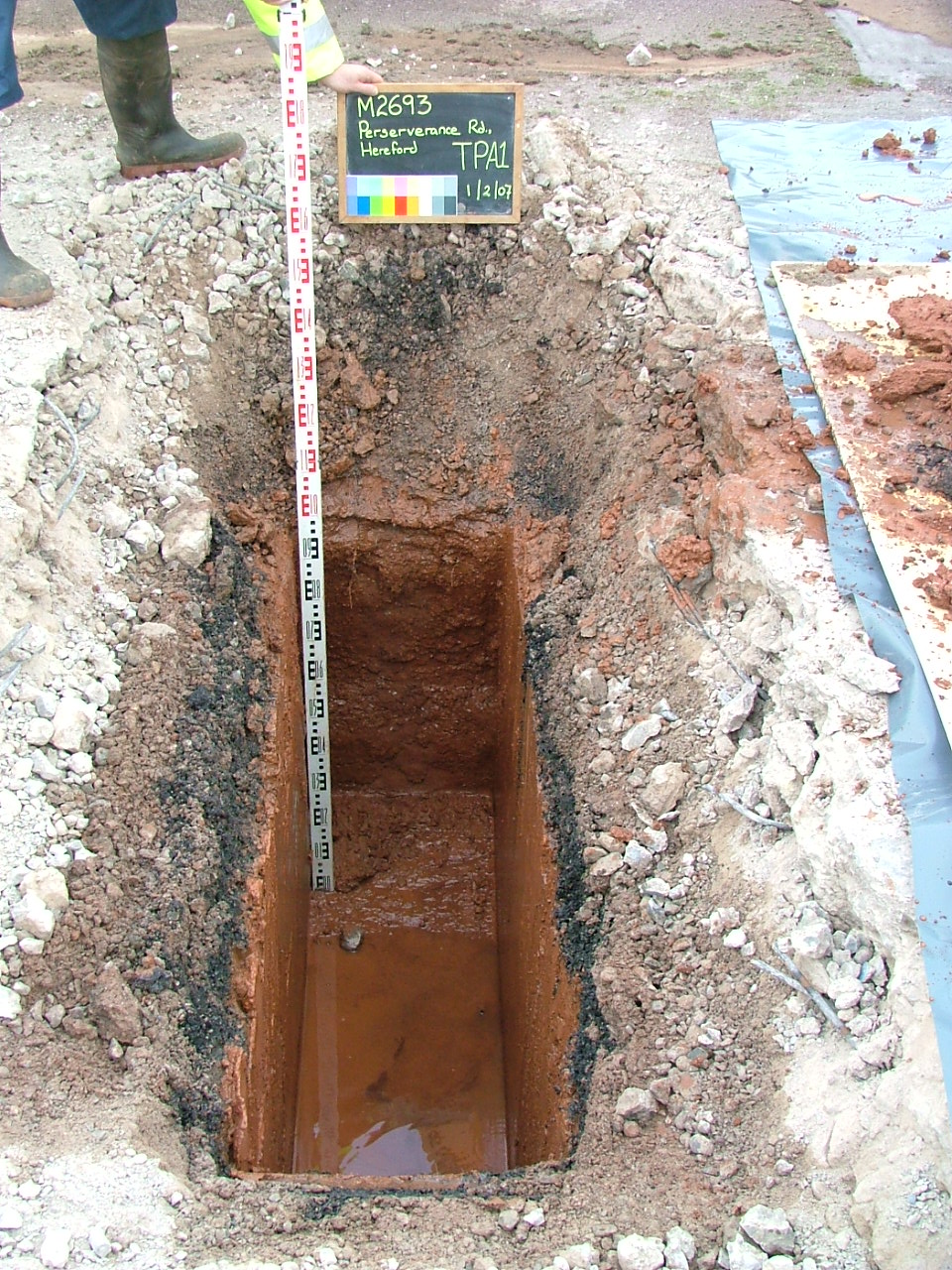The holes which are large enough to permit the entry of persons for inspection are called Test Pits. The dimensions of the pit depend largely upon the depths up to which the excavation is to be made.
With the PIT any form of the test is performed fast potentially making it possible to test every pile on a job site.

. These test pits average a depth of 3-15 feet deep and allow geotechnical engineers the opportunity to assess soil composition before officially breaking ground. It is usually a part of the Cultural Resources Management CRM methodology and a popular form of rapid archaeological survey in the United States of America and Canada. Trial pits are commonly used to investigate shallow ground conditions to develop an understanding of the profile of soils within the ground.
The PIT test consists of placing one or two accelerometers on the foundation to be tested generally at least one on the exposed top and hitting it with a small hand held hammer instrumented or not. This soil evaluation technique assesses ground water content sedimentary ground types and then adds a second overlay one thats determined by the loading properties of those multiple soil layers. Generally this is for siting shallow foundations.
Typically the plan view of the pit will be square rectangular or circular. The minimum dimensions of the pit. Test pits are holes dug prior to construction to help ensure the ground conditions are suitable for building projects.
The impact of the hammer generates a stress wave that propagates down the foundation and reflects back up. This is carried out using more complex drilling equipment. I chose PIT over other available mutation test tools mainly because of its.
The PIT test consists of attaching one or two accelerometers to the foundation and using a hand-held hammer to impact it. Test Pits or Trial Pits for Shallow Depths 2. Pile integrity test PIT or as ASTM D5882 refers to it as low strain impact integrity test is a common non-destructive test method for the evaluation of pile integrity andor pile length.
Generally the needles are made of timber beam or steel. PITest Tests Configuration Mutation testing may be resources-extensive sometimes so we need to put proper configuration in place to improve tests effectiveness. A trial pit also known as a test pit is a type of intrusive ground investigation that is used as a means of determining the condition of the ground typically before beginning construction works.
The pits are normally square in plane and are dug by hand or by excavating equipment. Test pits are dug either manually with backhoe equipment or with an excavator. Because less sophisticated machinery is used the process incurs less cost.
In cohesion-less soils the sides of the test pit are sharply sloped. Pile integrity test can be used for forensic evaluations on existing piles or. Tests generally fall into 4 categories test pits trenching boring and in situ testing.
Soil boring is done to varying depths. The purpose of a test pit excavation is to uncover the characteristics of the underlying soil. 1612 The concept of the test is based on wave propagation through the cross sectional area of the pile which detected changes in pile impedanceYoungs Modulus multiplied by Area divided by wavespeed ZEAc.
First holes are cut in the wall above the ground level at common intervals and strong needles are then inserted through the holes to carry the entire load of the structure. This makes mutation testing a very powerful and very useful technique I think anyone involved in software development and testing should at least be aware of. Pile Integrity Test PIT or low strain impact integrity testing of deep foundation is a widely used non-destructive test method for the evaluation of pile quality and integrity.
A shovel test pit STP is a standard method for Phase I of an archaeological survey. Substantial local state and federal regulations and site-specific health and. Test pits are much like you would expect a pit is dug either manually or with an excavator in order to reveal the subsurface conditions to the depth desired.
Using a test pit is a great way to avoid issues and save costs. In this method short length columns of 12 m to 18 m are underpinned. The PIT collects the acceleration data and displays curves.
The evaluation of PIT records is conducted either according to the Pulse-Echo or the Transient Response Procedure. In cohesive soils at depth. We can make use of the targetClasses tag to define the list of classes to be mutated.
Trenchlesspedia Explains Test Pitting. These test may be performed by the Pulse or Sonic Echo or Transient Response Methods. Introducing PIT I will try and illustrate the power of mutation testing using PIT a Java mutation test tool which can be downloaded here.
Test pitting can also be used for verifying the presence of utility lines indicated in the geotechnical report and also for. The trial pit record includes stability of excavated sides orientation position and surface elevation of the pit representation of encountered strata including lateral variation and samples of groundwater if encountered. Test pits are commonly used for exposing and sampling foundation and construction materials.
Personnel will not enter a test pittrench until authorized by the Safety Officer. But typically deep in excess of 15 ft. The test can also be used to estimate the unknown length of existing piles and foundations.
Auger Boring for Shallow or Large Depths. The test pit must be large enough to permit detailed examinations of the material in situ to be conducted or to obtain large undisturbed samples as required by the investigation. Generally a more expensive and complex procedure.
Trial pits are a simple and economical method of soil exploration to shallow depths. Unless otherwise specified in the FSP a test pit hand-dug or trench machine-dug will consist of an excavation dug through soil mine soil rock pile andor buried material.

Trial Pit Excavations Rsa Geotechnics

Plate Bearing Test Complete Guide With Pictures Definecivil

How To Perform Low Strain Pile Integrity Test Fprimec Solutions Inc

Builder S Engineer Recording Information Trial Pit And Borehole Logs And Soil Profiles

What Types Of Soil Tests Required For Building Construction

9 Important Civil Concrete Test Types Of Concrete Tests With Procedure

Plate Load Test Procedure Bearing Capacity Limitations Calculation

Plate Load Test An Overview Sciencedirect Topics

Soil Density Testing 3 Test Methods You Can Count On Gilson Co

Site Works Site Investigation And Soil Investigation Ppt Video Online Download

Test Pits Soil Exploration The Construction Civil

What Is A Test Pit Central Geotechnical Services

Builder S Engineer Recording Information Trial Pit And Borehole Logs And Soil Profiles
2 Planning And Making A Soil Survey

Plate Load Test Equipment Procedure Calculation Civil Engineering

Pile Integrity Test Pile Integrity Test Low Strain Impact Integrity Testing






0 komentar:
Posting Komentar